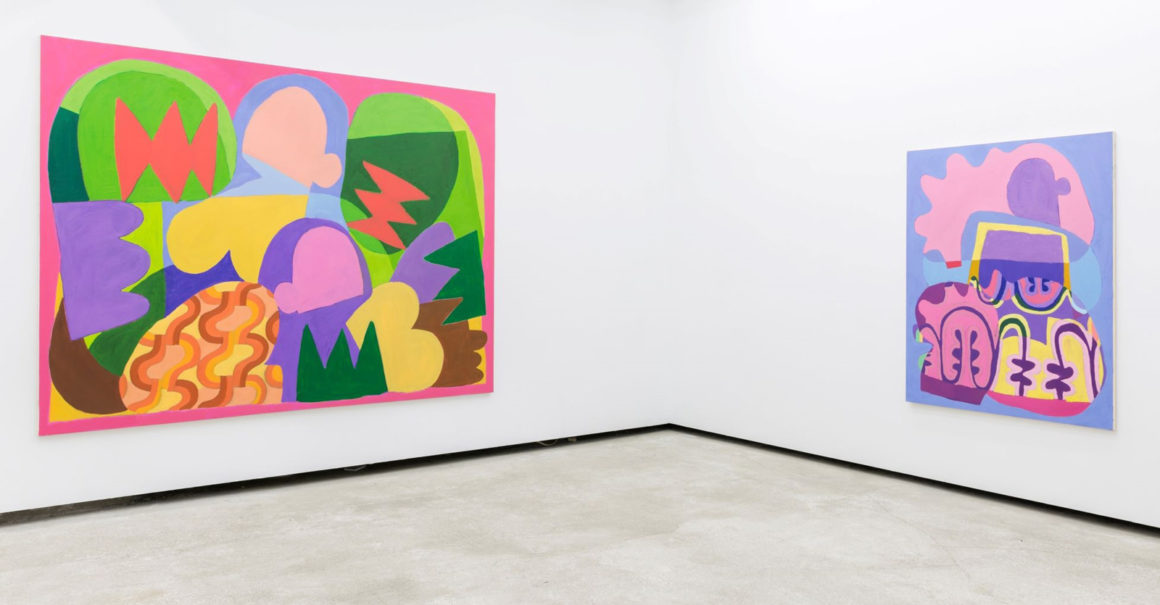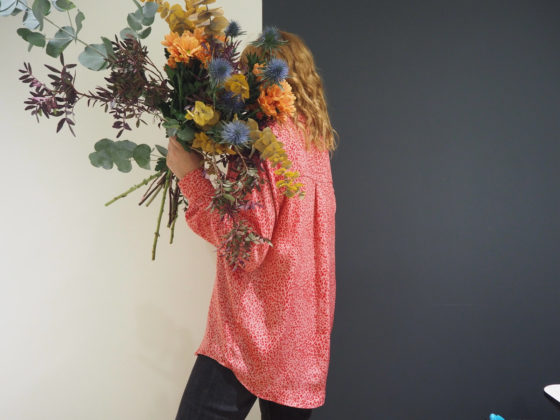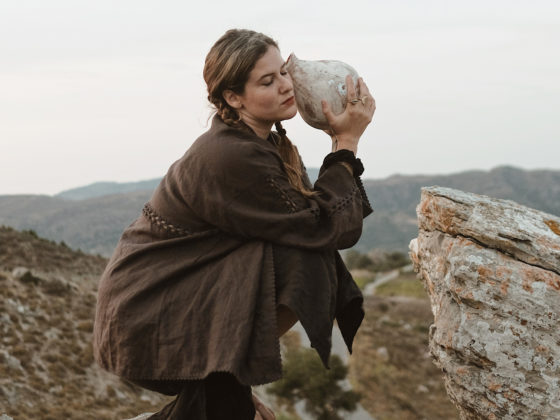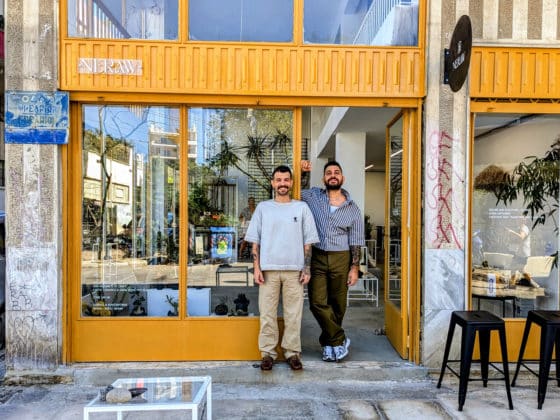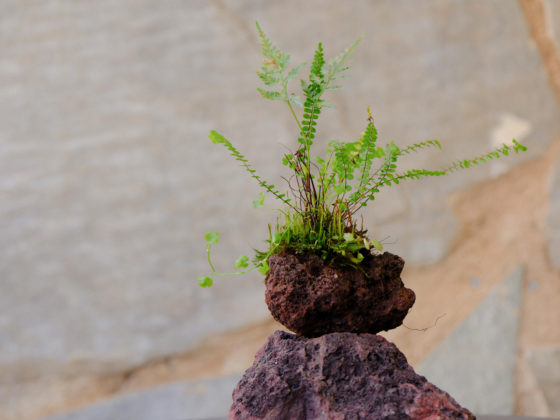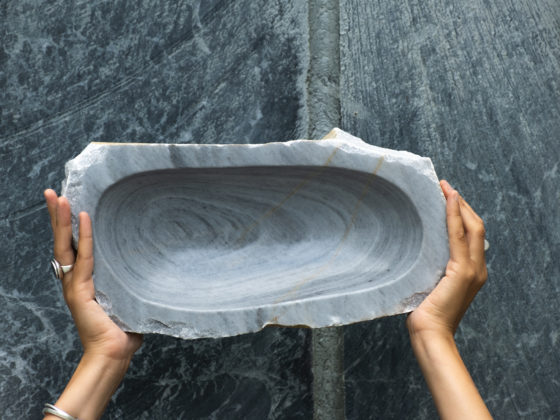The characters that populate the canvases in this exhibition are based on mythological references of ancient Greece, Egypt and Mesopotamia.
Figures like Athena, ancient Greek goddess of wisdom, as well as Ishtar, Babylonian goddess of love, fertility and war are the main protagonists, whilst Angra Mainyu, the evil, destructive spirit in Zoroastrianism and the legend of St. George also contribute to the formation of the characters. Patterns inspired by traditional embroidery and textiles add to the melody of form and colour while engaging in a cross-cultural dialogue.
Structured around the archetypal dichotomy of light and dark and good and evil, we are presented with two opposing sides. Despite the seemingly absolute nature of these dualities, we are invited to re-meditate on them not as concrete forms but as malleable structures capable of adopting qualities different to their predetermined ones. In this way, that which is considered delicate and fragile might in fact be very resilient and strong.
In paintings like Athena and her Girl Kill the Beast and in Death by Fair Hands we see a clash of these two forces leading to the death of the beast. Here the element of death is seen not as an abrupt end, but rather as a way of liberation, releasing something and letting it take on new forms. Thus, we come to see death as an ultimate act of acceptance or in other words we come to see it as a form of love.
Mythological and historical references create a narration that bestows a spiritual dimension to Aristeidis Lappas’ work. Binary definitions break down uniting into a primal understanding of existence where meagre segregations give way to the totality of the human experience. Form is a vehicle for meaning. It is treated as a narration tool or a representational element that creates a character. At the same time, it’s used as a building block where information can be inserted as colour, texture or pattern. Thus, a painting can be both a figurative and an abstract composition.
Having established an aesthetic language following his previous work with urbanity, as well as symbols of the Greek identity, Lappas now aims to construct a poetic narrative focusing on more esoteric subjects. Rather than following a linear avenue of thought, the work presents a space where different interpretations reconstruct new meanings and draw new connections. Through the use of form, multi- layered compositions as well as colour pallets, the artist continues his exploration of the language of painting.
It’s when you strike with confidence that the softness of material carries out the lethal blow. In the face of rampant anger, confused impulses in bestial expression a caress releases the suppressed. This is how you cut with tenderness.
This exhibition is dedicated to my father. – Aristeidis Lappas
The Breeder Gallery, Athens (Nov. 12 2020 – Jan. 9 2021)
Aristeidis Lappas (b. Athens, 1993) lives and works in Athens. He holds a BA from the University of West England, Bristol, UK. His work has been exhibited internationally in exhibitions like Theorimata 2, National Museum of Contemporary Art, Athens (2020); Polymorphic Entrancing Topos, P.E.T Projects, Athens (2019); Part II, The Breeder, Athens (2019); Break Time Contemplations, Transformer, Washington D.C (2018). He participates in the Artworks Fellowship Program 2020 and from November 2020 he will be a resident in St.A.I.R, Graz, Austria (Nov 2020 -Jan 2021).
